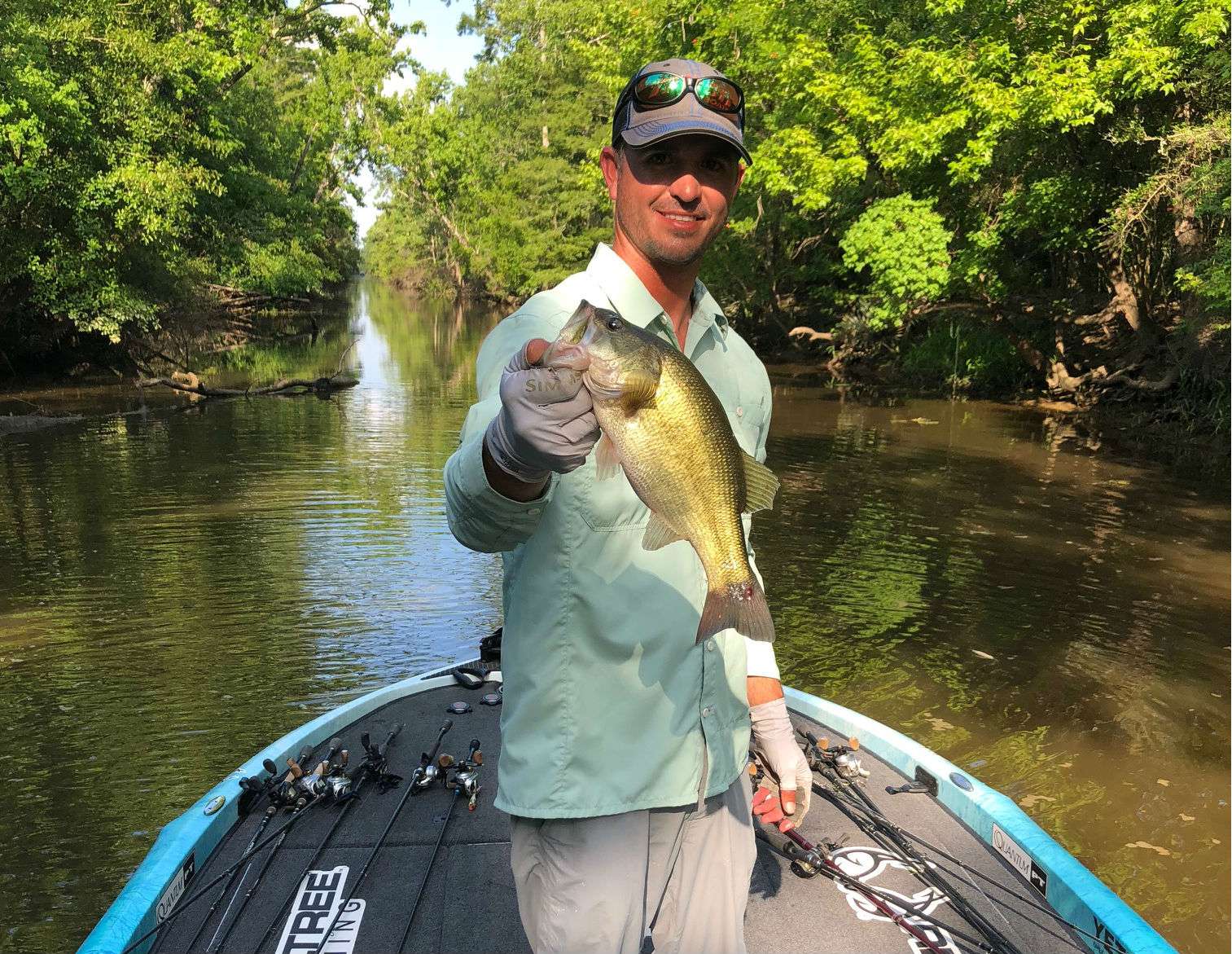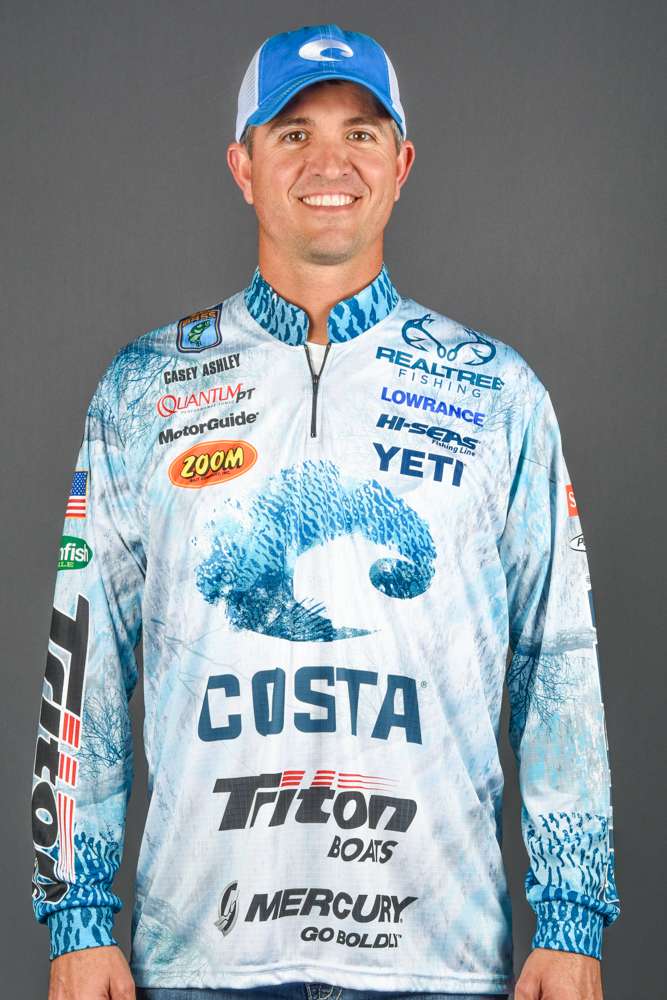
Twenty-sixth place on the Sabine River — I’ll take it.
Man, I don’t think anyone can tell you they’re going into an event on the Sabine River expecting to do good; everybody kinda goes into it just hoping to survive.
It’s a tough fishery with a lot of dead water and a lot of times, even if you find fish, they’re small. So finding those places where you can catch a 2- to 3-pounder every once in a while is tough to do.
I’ll tell you, as tough as it is, I really enjoy fishing that way. I actually like these shallow, dirty water tournaments, but the key for me is staying on target.
You hear a lot of guys talking about catching redfish while they’re bass fishing, but I tried not to waste time trying to find a needle in a haystack. A lot of those guys would get in those salt marshes and ride and idle; jump sandbars and try to find a pond that they could keep to themselves.
I didn’t fish unless I pretty well knew it was fresh water. That’s how I based my practice, and it worked well for me during the tournament.
I stayed in the Sabine the whole time, and I was never more than three miles from the takeoff. I found the fish that made me stay in my area on the last day of practice. In three days of tournament fishing, I burned 10 gallons of gas.
I spent my time in a long canal — the same one where Greg Hackney won. This place was only 25 feet wide and a mile long. Besides Hackney and me, Bill Lowen and several other guys fished in there.
That’s one of the things that makes this such a challenging fishery — you know all of this stuff is small and you try to do things that other guys aren’t doing so you might get a bite that they miss.
In my case, I knew Hackney was throwing a buzzbait, so I wanted to do something different. I wanted to be fishing for different fish, so I used a Texas-rigged Zoom Z-Craw Jr. with a 1/4-ounce weight and a 1/4-ounce jig with a Zoom Salty Chunk. I trimmed the jig to just behind the hook so it was small and compact. I think that gets a lot of bites when you’re going behind people using power baits.
The key, I found, was trusting that the fish were there enough to slow down and pick things apart. That can be hard to do when you’re fishing around other people. I mean Hackney busted them the first day; he caught that 6-pounder 50 yards from me.
But I stuck with my game plan and ended up with a decent finish. I think what kept me on track, while a lot of other guys were making these big long runs, was realizing the value of time management.
A lot can happen on those long runs and, knowing how good the Sabine River has been, I didn’t like to gamble running an hour or two hours one way and leave myself with very little time to fish. I like to stay close so I have more fishing time and just make the most of it.
The best part about this week is that I got some good points for the Toyota Bassmaster Angler of the Year race and continued the momentum I gained during my 14th-place finish on Lake Travis. That felt really good after finishing 100th at Grand Lake.
And that’s another important point: I already had a bad finish and then with a 58th at Kentucky Lake, I kinda had two bad events back-to-back. Knowing how tough the Sabine River is, having an 80th-, 90th-, 100th-place finish there would be detrimental to your season. Then you have to start swinging for the fence.
Because of that, I went into this event knowing I had to, at least, not bomb it. That was a little added pressure and it makes you fish differently; it makes you fish kind of conservatively.
A lot of stuff can happen when you make long runs on a place like the Sabine. Even if you catch them, you can break down, you can be late. That’s why I committed to my game plan, and I’m happy to say it worked out okay.

